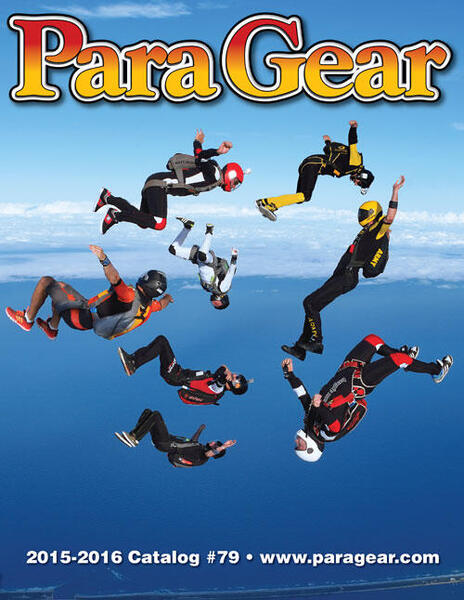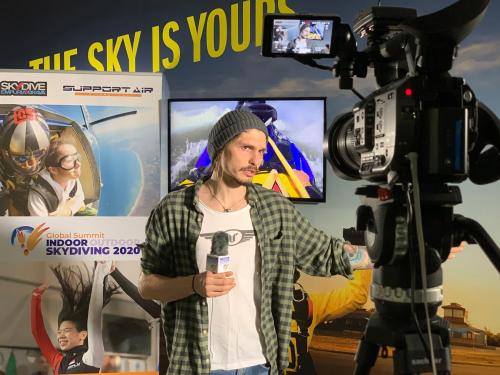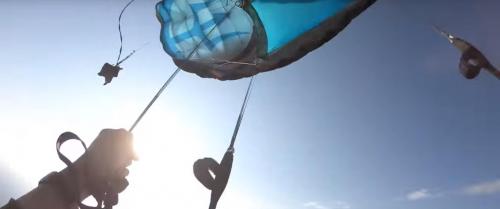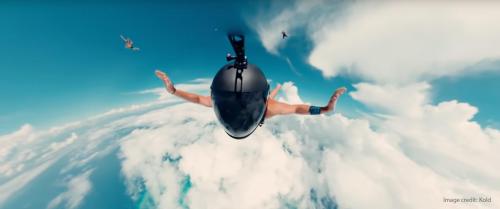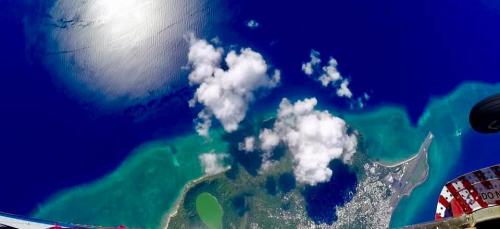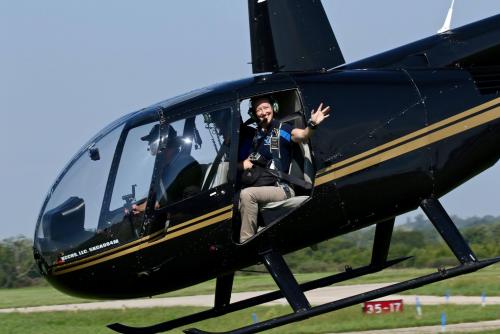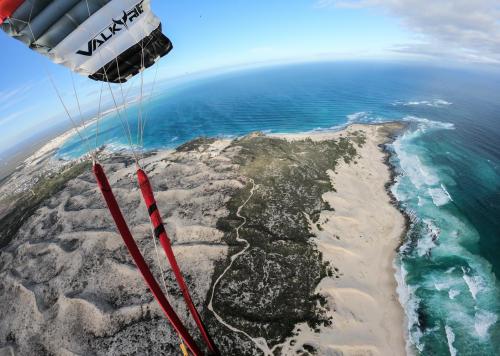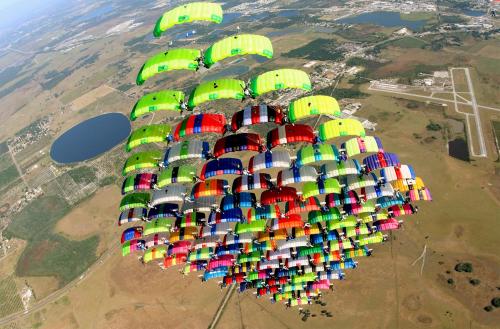The International Skydiving Museum & Hall of Fame is proud to honor the 100-Way Canopy Formation World Record Team with the museum Path of Excellence Award. The presentation will be made at the 2019 Hall of Fame Celebration at Skydive Perris, Perris, California, on Friday afternoon, October 18, prior to the Welcome BBQ. There will also be a tribute jump honoring the awardee.
Many groups, companies and teams have played a prominent role in the growth and development of our sport with their exceptional contribution in the form of innovation, performance and/or competitive excellence, leadership, education, safety, sponsorship and/or philanthropy, aviation, design/invention and/or manufacturing, sport promotion, and photograph/videography. The Path of Excellence Award is specifically for entities – groups, companies, organizations or teams for significant contribution(s) of enduring high value to the world of skydiving and is a prestigious award in both name and distinction. Award nominees are voted on by supporters of the museum including ambassadors, counselors, trustees, members of the Hall of Fame, and major donors.
On November 21st, 2007 the world’s largest canopy formation was built over the Florida Skydiving Center in Lake Wales, a record that still stands today. The formation was so large that the Miami Air Traffic Control Center monitored the formation on radar to keep other aircraft from coming into close proximity to the formation. The formation weighed 20,388 pounds and was 290 feet tall and 175 feet wide. In comparison, a 747-400 jet is only 231 feet long and the Wright brother’s first flight was not quite one third the distance as the formation is tall. Even though the 100 way formation was built in 2007, the journey to this record started 6 years earlier.
It all began at the end of 2001 when Chris Gay was talking to a couple of friends about the last world record of 46 skydivers back in 1994. The conversation started with questions of how difficult it is to organize such an event and ended with an agreement to organize a 50 way canopy formation the following year. Little did they know this would lead to a 5 year road to the 100 way Canopy Formation Largest Formation World Record.
The first event was in 2002 with the goal of setting a new US record. With the help of Betty Hill of the Florida Skydiving Center and Paul Fayard of Fayard Enterprises, the organizers had an outstanding place to host the event and a great fleet of aircraft to jump from. When not only 1, but 5 50-way canopy formations were built during the same day and an unofficial world record 56-way, it was realized with proper design, training and organization that the elusive triple digit 100 way canopy formation could be possible. The most difficult part would be convincing the canopy formation community that these ideas were necessary. However, following such a successful event gave the leverage and credibility that was needed to convince the community that changes were needed in technique and equipment. Even so it was an uproar when the announcement was made for standard slick jumpsuits, line sets and a given wing loading of 1.30-1.375 based on your position in the formation. It was explained for the safety of the group anyone wanting to be on the 2003 64 way world record attempts would have to sign and abide by a contract. This event was, once again, a complete success of not only multiple 64-way formations in the same day, but a 70-way formation the following day as well. After that success, the group saw the importance of correct engineering of the formation, proper techniques and standardized equipment.
During the next couple of attempts, the design and engineering of the formation was critical in order to have a stable formation upon its completion. This meant it maybe quasi stable during part of the build and would require the jumpers to learn to fly it during this phase. This was achieved by using tight jumpsuits in the center of the formation and baggy jumpsuits on the outside of the formation. Also, standard line trims and lengths were required. Lastly, learning where to place the older and slower canopies versus the newer or faster canopies. A better way to communicate the starburst breakdown to the jumpers was also needed and for this task Kirk Vanzandt volunteered. Performance Designs help in keeping their PD Lightning demo parachutes available and also assisted with quick turnaround for repairs that were critical over the years and during training and the actual events. Rusty Vest inspected and assessed each Lightning parachute at these events to place each canopy in the best place in the formation based on wear and age. The above changes along with newer training and docking techniques and standard wing loading helped build great flying 81 and 85 way canopy formation in 2005 and a 100 way canopy formation in 2007.
The 100 Way World Record utilized five aircraft, the first aircraft dropped 9 jumpers from 20,000 feet. The second dropped 27 jumpers from 18,000 feet. The third dropped 29 jumpers from 16,000 feet and the final two aircraft dropped the remaining 35 jumpers from 13,000 feet. The formation took approximately 11 minutes and 30 seconds to build and was held for 12 seconds. It was completed on the fifth attempt and captured on HD video by seven videographers from around the world. The formation consisted of jumpers from 14 countries including 56 from the United States, 7 from Australia, 7 from Germany, 6 from the Netherlands, 6 from Great Britain, 5 from Russia, 3 from Canada, 2 from Brazil, 2 from Egypt, 2 from France, 1 from Argentina, 1 from Belarus, 1 from Belgium and 1 from Finland.
Special thanks to Kirk Vanzandt, Betty Hill, Paul Fayard, Rusty Vest, and Performance Designs for their support and assistance with this journey to the 100-way. The videographers that captured the incredible images that showcased the 100 Way CF World Record to the world were Bruno Brokken, Gustavo Cabana, JC Colclasure, Norman Kent, Keith MacBeth, Pam Pangburn, and Bryan Scott.
2002 US Record 50Ways and Unofficial World Record 56Way
Organizers: Chris J. Gay, Dave Richardson, Mark Gregory
2003 World Records 64Ways and 70Way
Organizers: Chris J. Gay, Dave Richardson, Mark Gregory, Mike Lewis
2005 World Record 81Ways and 85Way
Organizers: Chris J. Gay, Brian Pangburn, Dave Richardson, Mike Lewis
2007 World Record 100Way
Organizers: Chris J. Gay, Brian Pangburn, Christophe Balisky, Mike Lewis
Since 2010, as part of the International Skydiving Museum & Hall of Fame awareness and fund raising efforts, the museum has held an annual weekend event celebrating the sport and history of skydiving. “The Celebration is an exciting and prestigious three day event that brings generations of skydivers together. The celebration honors the glory days of our past and showcases the marvels of today’s equipment and skydiving skill of today’s superstars and inspires younger jumpers to make their mark,” said James F. Curtis III, President/CEO of the Board of Trustees for the museum.
This year’s celebration will feature a 10-Way Speed STAR WARS competition, forums featuring Luke Aikins and Alan Eustace, a Pioneers Lunch sponsored by Strong Enterprises and much more. After a weekend of skydiving activities and non-skydiving activities that has something for everyone, the International Skydiving Hall of Fame Induction Ceremony will take center stage continuing the tradition of honoring legends, leaders and pioneers of our sport. This year’s inductees are Irena Avbelj (Slovenia), Chuck Collingwood (posthumous) USA, Kate Cooper-Jensen USA, Patrick de Gayardon (posthumous) France, Alan Eustace USA, John P. Higgins USA, Andy Keech Australia, Tom Sanders USA, Deke Sonnichsen USA, and John “Lofty” Thomas (posthumous) Great Britain. More than 400 skydiving enthusiasts from around the world will be in attendance at the fundraiser which is expected to raise more than $100,000 for the museum. For more information about the International Skydiving Museum & Hall of Fame and the Celebration Event, visit www.skydivingmuseum.org or contact museum administrator, Nancy (Kemble) Wilhelm, at 407/900-9997 (direct line) or [email protected]
Photo by: Keith MacBeth

